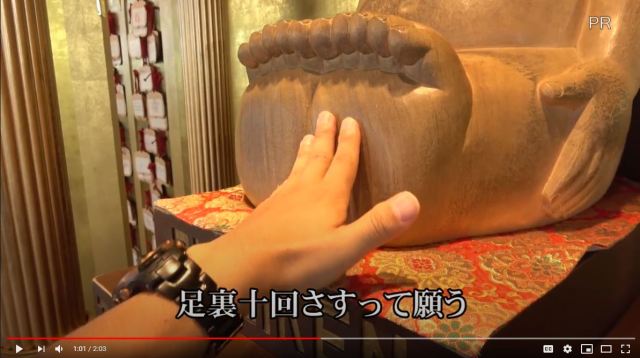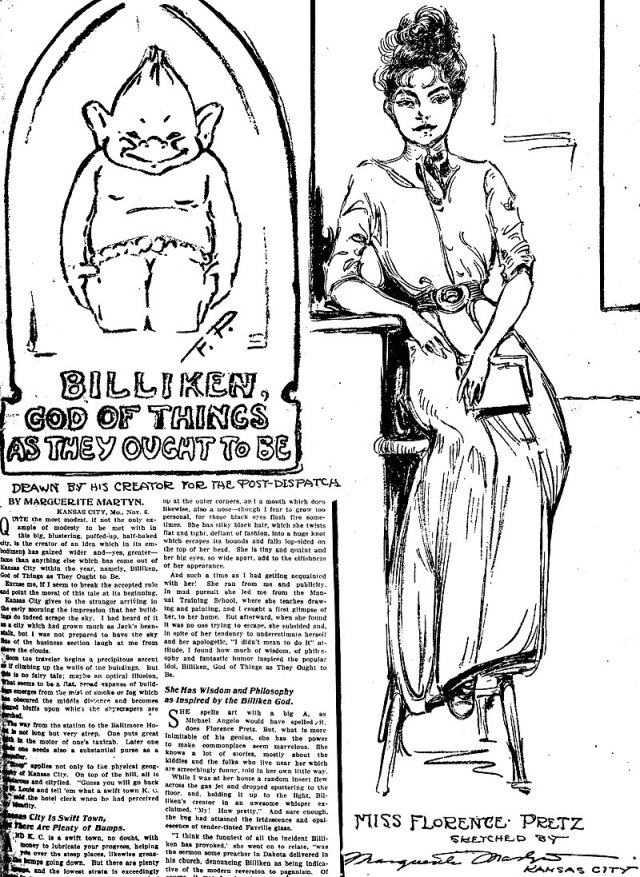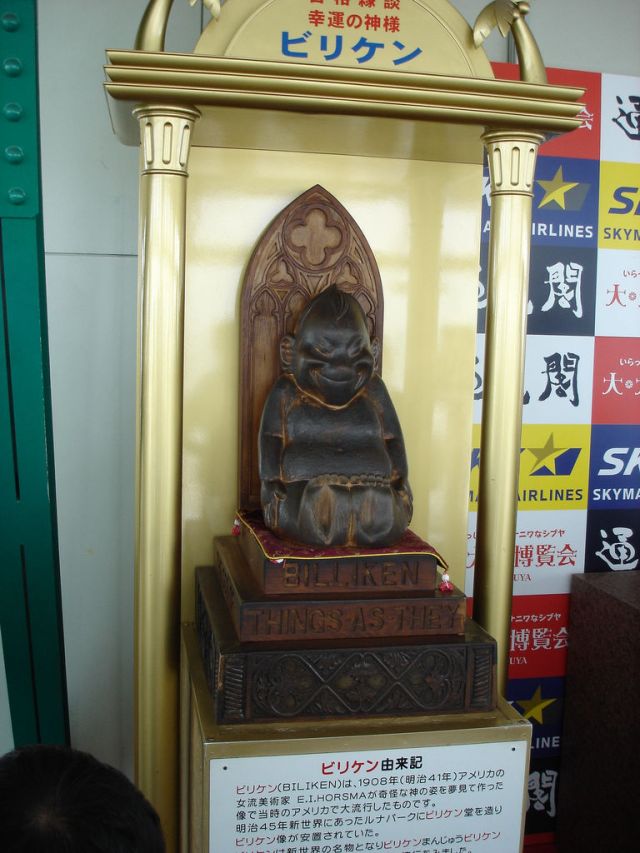
We’re not quite at the Billiken-foot-rubbing stage of normalcy yet.
While still sitting on the possible cusp of second-wave coronavirus outbreaks in Japan, shops and attractions are slowly getting back to business. Far from a full blown reopening, however, tight restrictions are being exercised in several industries such as amusement park guests being asked to refrain from showing emotions and to practice social distancing with the ghosts in haunted houses.
Now, you might be asking: “Well, at least I can still go and rub the large feet of a monkey-like god statue in Osaka, right?”
Wrong! As the following news report shows, visitors to Osaka’s famous Tsutenkaku tower are instructed to instead “air touch” the soles of its famous Billiken statue for the time being.
https://www.youtube.com/watch?v=_W7gRBAX3Fw
If you weren’t asking the previous question, then you might now be asking: “What the hell are you talking about?”
It all started back in 1908, when an American artist by the name of Florence Pretz (no relation to the snack) had a vision of this mysterious creature in a dream. After committing its likeness to paper and giving it the name Billiken, Pretz patented her newfound deity as “The God of Things as They Ought to Be.”
Around that same time the Meiji restoration was in full swing in Japan, and the country was rapidly embracing Western culture, partly by scooping up the licenses for iconic western figures left and right. This is about the same time that American Kewpie dolls were imported to Japan, only to ultimately become the face of its leading mayonnaise brand.
For better or for worse, a prime minister of Japan during the Billiken fad, Terauchi Masatake, bore an uncanny resemblance to the magical troll and was even nicknamed “Prime Minister Billiken.”
For much of the early 20th century, Billiken lucky charms were enjoying huge popularity in both America and Japan and in 1912 a famous statue of him was placed in the original Tsutenkaku of Luna Park amusement park in what is now the Shinsekai area of Osaka. A Japanese superstition was also promoted that rubbing Billiken’s large protruding feet will bless you with good luck.
▼ Japan also gave Billiken his own theme song, Billiken Samba, at some point
Meanwhile in the US, Billiken-fever began to subside and most of the country gradually forgot about the character. Usage of his likeness became relegated to a few pockets of American culture, most notably as the mascot for Saint Louis University.
▼ Billiken was the winner of Jimmy Fallon’s 2019 mascot slam dunk contest
In Japan too, Billiken was never quite what it was in the early 1900s, and slowly vanished from most parts of the country. It was only in Osaka and the surrounding area that his legacy lived on, in no small part because of his close connection with the heart of the city’s tourism industry.
A wooden Billiken statue, replicating the one installed in Luna Park from 1912 to 1923, was placed in Tsutenkaku in 1979. It was a big draw and so many people rubbed its feet while visiting that they began to develop grooves measuring about 4 centimeters (1.57 inches) deep.
In 2012, on the 100th anniversary of it’s original installation, a new version was installed and currently sits on the observation deck, while the second-generation Billiken was moved to the lower traffic of the fifth floor. Each one still sits there to this very day, ready to dispense good luck in exchange for foot rubs.
And so, that is why Japan will never be quite back to normal until everyone is able to rub the feet of the SLU mascot at the top of a major Osaka landmark.
We’ll get there someday….
Source: Niconico News, Billiken.jp
Top image: YouTube/T.Eguchi
● Want to hear about SoraNews24’s latest articles as soon as they’re published? Follow us on Facebook and Twitter!




 We slide down Osaka’s most famous tower and get free curry for it
We slide down Osaka’s most famous tower and get free curry for it Osaka’s iconic giant pufferfish may disappear due to COVID-19
Osaka’s iconic giant pufferfish may disappear due to COVID-19 Starbucks Japan ready to get Year of the Horse started with adorable drinkware and plushies【Pics】
Starbucks Japan ready to get Year of the Horse started with adorable drinkware and plushies【Pics】 Test your Japanese onomatopoeia skills against YouTuber Sharla in Japan
Test your Japanese onomatopoeia skills against YouTuber Sharla in Japan Beautiful Starbucks in Kyoto blends into its traditional landscape in more ways than one
Beautiful Starbucks in Kyoto blends into its traditional landscape in more ways than one Pizza Hut Japan’s hot lucky bags are perfect for a New Year’s pizza party
Pizza Hut Japan’s hot lucky bags are perfect for a New Year’s pizza party Starbucks Japan releases a Sunset Frappuccino as a sayonara to summer
Starbucks Japan releases a Sunset Frappuccino as a sayonara to summer Want to try this super popular ramen shop, but can’t get a reservation? We’ve got tips for you
Want to try this super popular ramen shop, but can’t get a reservation? We’ve got tips for you Popular Japanese ramen restaurant Ichiran’s lucky bags are great value for money
Popular Japanese ramen restaurant Ichiran’s lucky bags are great value for money Fending off unwanted Kabe-don: A guide
Fending off unwanted Kabe-don: A guide Harajuku’s new permanent Tamagotchi shop is filled with cuteness and a surprising lack of poop
Harajuku’s new permanent Tamagotchi shop is filled with cuteness and a surprising lack of poop Are Japanese rice cookers really better than Chinese ones? We test it out and get some surprises
Are Japanese rice cookers really better than Chinese ones? We test it out and get some surprises 7-Eleven Japan’s ramen-cooking robot whipped us up a bowl of noodles【Taste test】
7-Eleven Japan’s ramen-cooking robot whipped us up a bowl of noodles【Taste test】 Cyberpunk anime meets traditional culture in Ghost in the Shell gold leaf Japanese changing screens
Cyberpunk anime meets traditional culture in Ghost in the Shell gold leaf Japanese changing screens 7 great places to see Mt. Fuji from without having to climb it
7 great places to see Mt. Fuji from without having to climb it Hello Kitty Choco Egg figures are an adorable trip through three periods of Japanese pop culture【Pics】
Hello Kitty Choco Egg figures are an adorable trip through three periods of Japanese pop culture【Pics】 Japan’s otoshidama tradition of giving kids money at New Year’s gets a social welfare upgrade
Japan’s otoshidama tradition of giving kids money at New Year’s gets a social welfare upgrade We found possibly the quietest Japanese-style hotel in Tokyo’s bustling Shinjuku district
We found possibly the quietest Japanese-style hotel in Tokyo’s bustling Shinjuku district Lacquerware supplier to emperor of Japan and Pokémon team up for new tableware
Lacquerware supplier to emperor of Japan and Pokémon team up for new tableware Sumo Sanrio! Hello Kitty and pals team up with Japan Sumo Association for new merch【Pics】
Sumo Sanrio! Hello Kitty and pals team up with Japan Sumo Association for new merch【Pics】 Can a dirty butthole make you filthy rich in Japan? We’re starting a New Year’s lottery experiment
Can a dirty butthole make you filthy rich in Japan? We’re starting a New Year’s lottery experiment 7-Eleven Japan starts new temporary luggage storage service in over 300 branches
7-Eleven Japan starts new temporary luggage storage service in over 300 branches Disillusionment at Tsukiji’s tourist-target prices led us to a great ramen restaurant in Tokyo
Disillusionment at Tsukiji’s tourist-target prices led us to a great ramen restaurant in Tokyo Starbucks teams up with 166-year-old Kyoto doll maker for Year of the Horse decorations【Photos】
Starbucks teams up with 166-year-old Kyoto doll maker for Year of the Horse decorations【Photos】 Tokyo considering law requiring more trash cans following litter increase in heavily touristed area
Tokyo considering law requiring more trash cans following litter increase in heavily touristed area Tokyo’s Tsukiji sushi neighborhood asks tour groups to stay away for the rest of the month
Tokyo’s Tsukiji sushi neighborhood asks tour groups to stay away for the rest of the month Nintendo’s Kirby now delivering orders at Kura Sushi restaurants, but not in Japan
Nintendo’s Kirby now delivering orders at Kura Sushi restaurants, but not in Japan Tokyo event lets you travel back in time, for free, to celebrate 100 years since Showa era start
Tokyo event lets you travel back in time, for free, to celebrate 100 years since Showa era start Sanrio theme park in Japan announces plans to expand into a Sanrio resort
Sanrio theme park in Japan announces plans to expand into a Sanrio resort Japan may add Japanese language proficiency, lifestyle classes to permanent foreign resident requirements
Japan may add Japanese language proficiency, lifestyle classes to permanent foreign resident requirements Survey asks foreign tourists what bothered them in Japan, more than half gave same answer
Survey asks foreign tourists what bothered them in Japan, more than half gave same answer Japan’s human washing machines will go on sale to general public, demos to be held in Tokyo
Japan’s human washing machines will go on sale to general public, demos to be held in Tokyo Japan’s deadliest food claims more victims, but why do people keep eating it for New Year’s?
Japan’s deadliest food claims more victims, but why do people keep eating it for New Year’s? We deeply regret going into this tunnel on our walk in the mountains of Japan
We deeply regret going into this tunnel on our walk in the mountains of Japan Studio Ghibli releases Kodama forest spirits from Princess Mononoke to light up your home
Studio Ghibli releases Kodama forest spirits from Princess Mononoke to light up your home Major Japanese hotel chain says reservations via overseas booking sites may not be valid
Major Japanese hotel chain says reservations via overseas booking sites may not be valid Put sesame oil in your coffee? Japanese maker says it’s the best way to start your day【Taste test】
Put sesame oil in your coffee? Japanese maker says it’s the best way to start your day【Taste test】 No more using real katana for tourism activities, Japan’s National Police Agency says
No more using real katana for tourism activities, Japan’s National Police Agency says Starbucks Japan reveals new sakura drinkware collection, inspired by evening cherry blossoms
Starbucks Japan reveals new sakura drinkware collection, inspired by evening cherry blossoms Updated cherry blossom forecast shows extra-long sakura season for Japan this year
Updated cherry blossom forecast shows extra-long sakura season for Japan this year
Leave a Reply